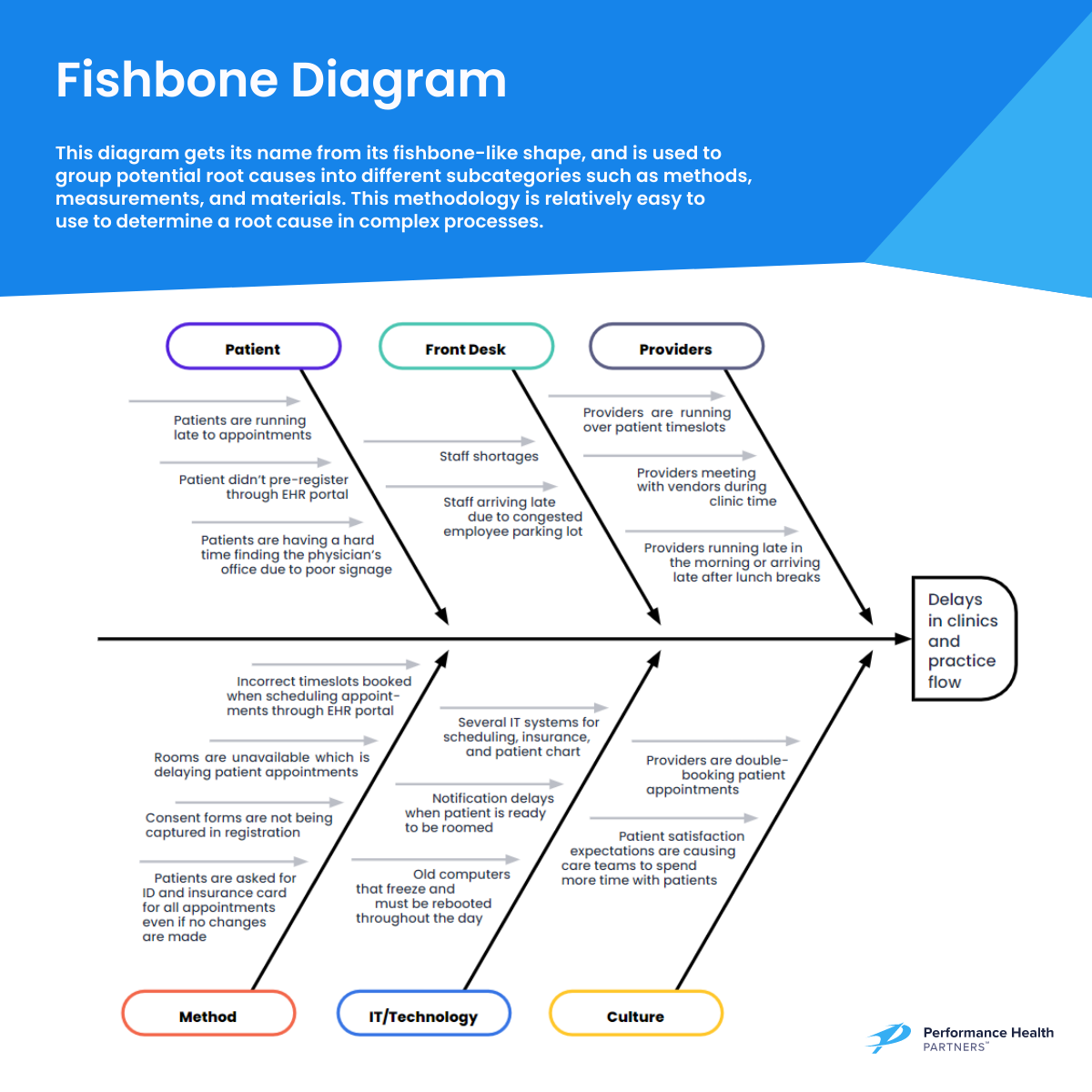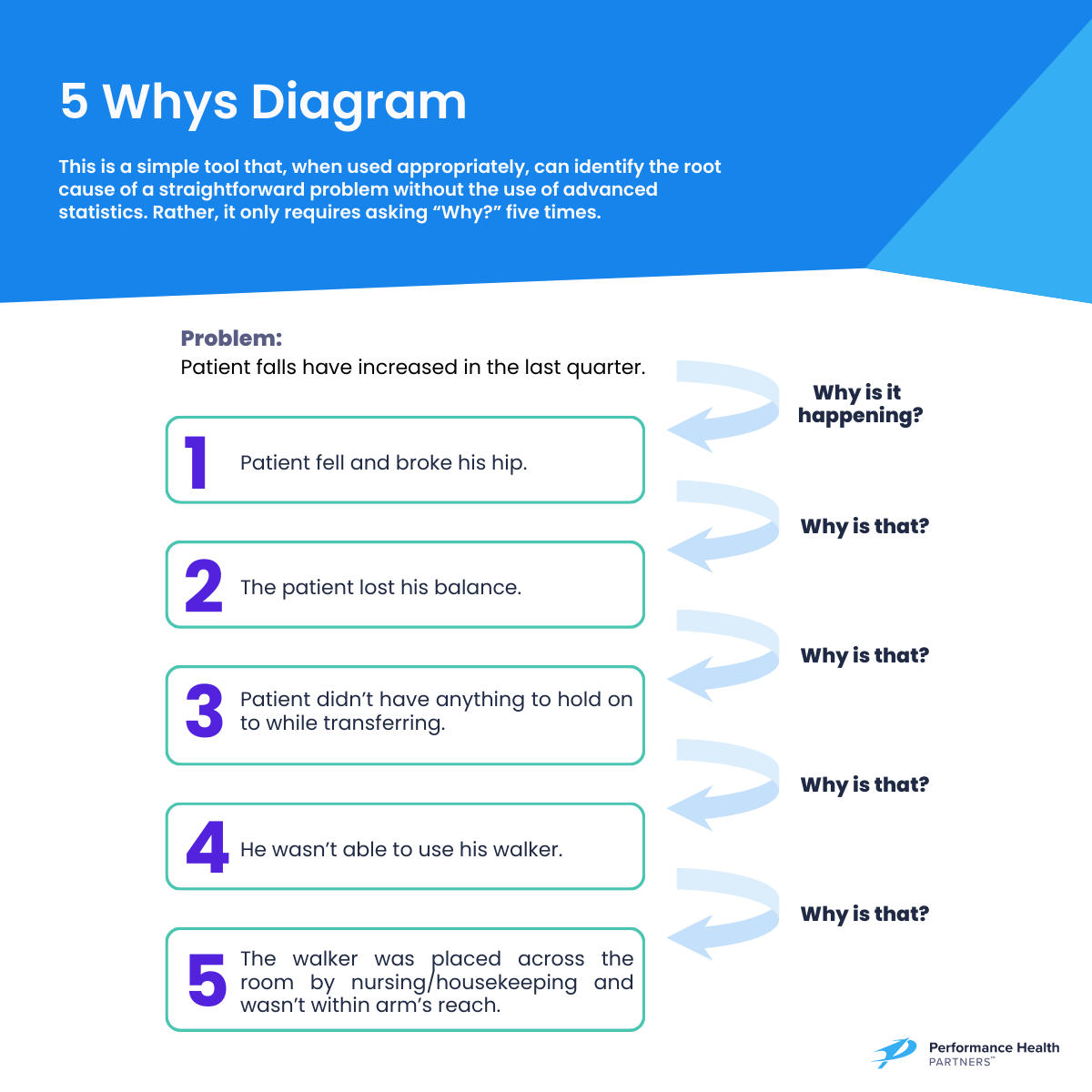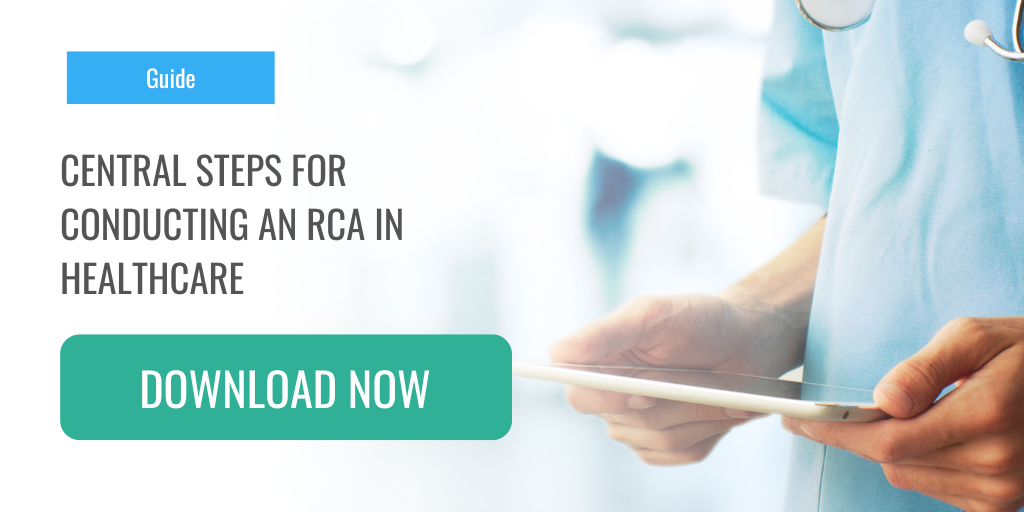RCA in healthcare is a critical process for organizations that aims to identify the underlying causes of a safety issue or an adverse event. Read on to learn more about the process and strategies for overcoming its challenges and limitations.
What is Root Cause Analysis?
Root cause analysis (RCA) is a methodical and organized approach that seeks to identify the fundamental reasons behind a problem instead of merely addressing the symptoms. Its purpose is to discover the underlying causes of an issue so that appropriate and effective solutions can be developed to prevent its recurrence.
For example, patient falls in healthcare facilities can be caused by a variety of factors such as poor communication, failure to follow established protocols and safety measures, insufficient staffing levels, or environmental deficiencies. By using RCA in healthcare, organizations can identify which of these factors led to a specific patient fall and develop targeted interventions to prevent similar events from happening in the future.
Adopting an RCA-based approach helps healthcare organizations to proactively address potential problems and continually improve their systems, processes, and protocols. RCA should be viewed as an essential tool in the pursuit of patient safety and quality improvement in healthcare settings.
Why is RCA important in healthcare?
RCA is crucial in the healthcare industry for several reasons, including:
- Improving patient safety: RCA helps identify and address the root causes of adverse events, reducing the likelihood of similar incidents happening in the future. This is especially important in healthcare, where patient safety is paramount. In a hospital system, the implementation of RCA resulted in a 68% reduction in patient falls with injuries, according to a study published in the Journal of Nursing Care Quality. Additionally, the Agency for Healthcare Research and Quality found that the use of RCA can reduce medical errors by up to 90%.
- Reducing costs: RCA helps healthcare organizations reduce costs associated with adverse events, such as lawsuits, insurance claims, and medical expenses. By identifying and addressing the root causes, organizations can prevent similar incidents from occurring in the future, saving both money and resources.
- Enhancing quality: RCA helps identify opportunities for improvement in healthcare processes and systems, which can lead to better patient outcomes and improved quality of care. By understanding the root causes of issues, organizations can implement changes that address the underlying problems, rather than simply treating the symptoms.
- Complying with regulations: Many healthcare organizations are required by regulatory agencies to conduct root cause analysis for adverse events. Compliance with these regulations is essential for maintaining accreditation and avoiding penalties.

RCA in Healthcare: Methodologies
There are several RCA methodologies used in healthcare, including:
Fishbone Diagram
Also known as the “Ishikawa Diagram” or “Cause-and-Effect Diagram,” this technique involves brainstorming all possible causes of an adverse event and organizing them into categories, such as equipment, people, process, and environment. The diagram resembles a fishbone, with the main problem at the head of the fish and the potential causes branching out from the spine. This technique is useful for identifying potential causes and visualizing the relationship between different factors.

5 Whys
This technique involves asking "why" questions repeatedly to identify the root cause of a problem. The questioning process continues until a satisfactory answer is reached, usually after five iterations. This technique is useful for identifying the underlying causes of issues by drilling down into the problem.

Failure Modes and Effects Analysis (FMEA)
This technique involves systematically identifying potential failures in a process or system, assessing the severity of their effects, and developing strategies to prevent or mitigate them. This technique is useful for identifying potential problems before they occur and developing strategies to prevent them.
Barrier Analysis
This technique involves identifying barriers that failed or were absent, leading to the adverse event. The analysis is used to identify potential gaps in the system and develop strategies to prevent similar incidents in the future. This technique is useful for identifying system-level issues that contribute to adverse events.
Important factors to consider when conducting RCA in healthcare
RCA is an essential component of comprehensive quality management in healthcare, revealing opportunities for process improvement that can enhance safety, quality, and cost-effectiveness. However, inappropriate or ineffective adoption of RCA can lead to blame-shifting, political pushback, and wasted effort.
To conduct RCA in healthcare, it’s important for healthcare leaders to keep in mind several factors to ensure the process is effective. Below is a list of strategies to keep in mind when implementing root cause analysis in healthcare.
- It’s essential that the RCA process be a team effort that involves stakeholders from different areas and departments of the organization, including clinicians, administrators, and support staff. The involvement of different stakeholders ensures that all perspectives are considered and that the root causes are thoroughly identified.
- RCA should be conducted in a blame-free environment, with the goal of identifying and addressing system issues rather than blaming individuals. This approach ensures that staff members feel comfortable reporting adverse events and participating in the RCA process.
- The RCA process should be conducted as soon as possible after an adverse event to ensure accurate information and minimize bias. Delayed RCA can lead to incomplete or inaccurate information, which can hinder the identification of root causes.
- Healthcare organizations should have a standard process for conducting RCA and ensure that all staff members are trained on the process. Standardizing the RCA process ensures consistency and accuracy in the RCA process.
- RCA should include a review of policies and procedures, as well as an assessment of the organization’s culture and systems. This approach helps identify potential gaps in policies and procedures, as well as systemic issues that contribute to adverse events.
- The RCA process should result in the development of a corrective action plan that addresses the root causes of the adverse event. The corrective action plan should include specific actions, timelines, and responsible individuals or departments. Integration of RCA into an overall quality improvement process that examines the clinical value chain, identifies risks and opportunities, and prioritizes interventions based on RCA findings is key to maximizing its impact.
- The effectiveness of the corrective action plan should be monitored and evaluated regularly to ensure that it is achieving its intended results. This approach helps identify any additional changes that may be necessary to prevent similar adverse events from occurring in the future.
Overcoming the Challenges and Limitations of RCA in Healthcare
Conducting root cause analysis is a multifaceted and non-linear process that requires balancing a multitude of considerations and expectations. As a result, despite its many benefits, RCA is not without its challenges. Some limitations of RCA in healthcare include:
- Time and resource constraints: RCA can be a time-consuming process that requires significant resources, including personnel and technology. Many healthcare organizations may not have the necessary resources to conduct RCA effectively.
- Difficulty identifying root causes: Identifying root causes can be challenging, particularly in complex healthcare systems. It may be challenging to identify all the factors that contributed to an adverse event, particularly if they are systemic or cultural.
- Limited generalizability: RCA is often specific to a particular incident or event, and the findings may not be generalizable to other situations. As a result, organizations must conduct RCA for each adverse event to identify the root causes.
- Resistance to change: Implementing changes identified through RCA can be challenging, particularly if they require significant changes to policies, procedures, or culture. Resistance to change can hinder the effectiveness of RCA.
Despite the challenges and limitations of RCA, it is a valuable tool for improving patient and employee safety, reducing costs, improving outcomes, and complying with regulations in healthcare.
To promote the effective use of root cause analysis, healthcare leaders must openly endorse the process and support staff who engage in it, foster increased staff participation in learning opportunities and new analytical tools, and cultivate proficiency in change management. This starts with establishing a culture of safety that encourages reporting of adverse events and supports the RCA process and enable healthcare workers to feel empowered to share their observations around unsafe conditions and events.
Moreover, healthcare organizations should dedicate sufficient resources to conduct RCA effectively, such as providing appropriate training, personnel, and technology.
Utilizing Technology to Streamline the RCA Process
One way to facilitate and make the RCA process more efficient is by utilizing an incident management system that has built-in RCA capabilities. Performance Health Partners’ incident management system provides an all-in-one solution for incident reporting, investigation, and analysis.
Our platform can easily and quickly capture data through intuitive reporting forms, and categorize incidents based on their severity and impact. The system also includes an RCA module that guides users through the RCA process step-by-step – following your organization’s preferred methodology – and provides a centralized repository for documentation and corrective action plans.
By leveraging an incident management system with built-in RCA capabilities, healthcare organizations can standardize the RCA process, ensure consistency and accuracy, and ultimately drive improvements in patient safety and quality of care.
Ready to learn more?
Let our team show you how our incident management system can help streamline the RCA process at your organization so you can spend more time focusing on what’s most important: providing the best quality care in the safest possible environment. Get in touch with us by clicking here.


